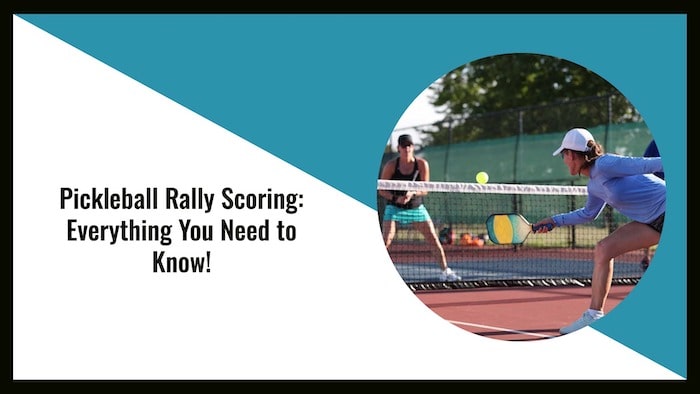Welcome to the world of pickleball! If you’re a pickleball enthusiast or a beginner just getting started with this popular sport, then you may have heard of “rally scoring.” Rally scoring is a scoring system used in pickleball that differs from the traditional scoring methods found in other racket sports.
In this blog article, we will explore what rally scoring is, how it works, and why it’s gaining popularity among pickleball players. Whether you’re a seasoned player or new to the game, understanding rally scoring is essential to elevate your pickleball skills and enhance your overall playing experience.
So let’s dive in and learn all about pickleball rally scoring!
What is Pickleball Rally Scoring and How Does It Work?
Rally scoring is a scoring system in which points are awarded to whichever team wins the rally, regardless of who serves the ball. This means that both the serving team and the receiving team can score points on every point played.
Rally scoring is different from traditional scoring, which is also known as side-out scoring. In traditional scoring, only the serving team can score points. If the serving team wins the rally, they get a point and continue to serve. If the receiving team wins the rally, they do not get a point but they get the serve.
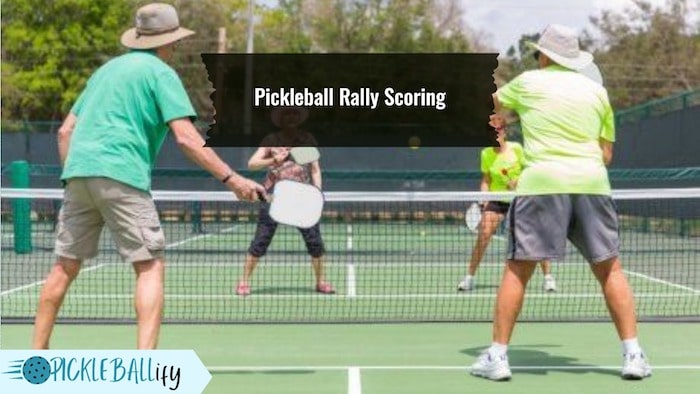
Rally scoring is used in many sports, such as volleyball, badminton, table tennis, and squash. It is also used in some pickleball events, such as Major League Pickleball and some non-sanctioned tournaments.
There are different ways to implement rally scoring in pickleball, but one common format is as follows:
- Each game is played to 15 points, and you must win by two points.
- Each partner on a team decides which side of the court (left or right) to start on. They stay on that side for the entire game unless they switch sides on a time-out or an end change.
- The team that serves first starts the game with one service only. The player on the right side of the court serves first (crosscourt).
- If the serving team wins the rally, they get a point and continue to serve. However, the partner on the left side of the court serves next (but they stay on their respective sides).
- If the receiving team wins the rally, they get a point and get the serve. The player on the right side of the court serves first (crosscourt).
- The serve alternates between partners until one team wins the game.
Pros and Cons of Rally Scoring in Pickleball
Rally scoring has been a topic of debate among pickleball players and fans for a long time. There are arguments for and against using rally scoring in pickleball. Here are some of them:
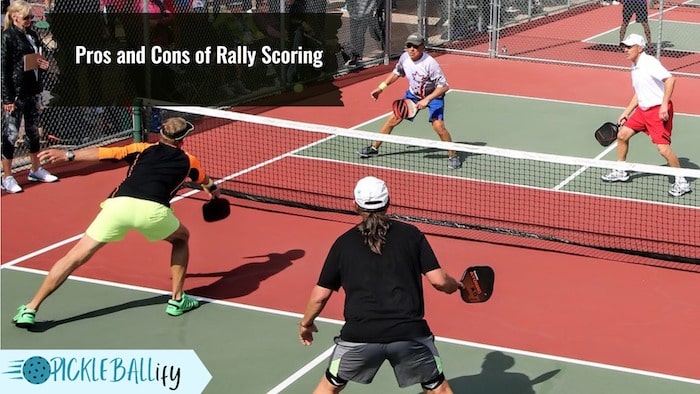
Pros of Rally Scoring
- Rally scoring makes games faster and more exciting. Since every point counts, there is more pressure and intensity on every shot. Games can be completed in less time than traditional scoring, which can be beneficial for crowded courts or limited time slots.
- Rally scoring makes games more predictable and marketable. Since games have a fixed number of points (15), it is easier to estimate how long a game or a match will last. This can help with scheduling tournaments, broadcasting events, and attracting sponsors and viewers. It can also make scoring easier for new players and spectators to understand.
- Rally scoring makes games more fair and accurate. Since both teams can score points on every rally, there is less advantage for the serving team or disadvantage for the receiving team. This can reduce the impact of luck or errors on the outcome of the game. It can also reflect more accurately the skill level of each player or team.
- Rally scoring makes games more compatible with other sports. Since many other sports use rally scoring, it can make pickleball more appealing and familiar to players and fans of those sports. It can also increase pickleball’s chances of being considered for inclusion in major events like the Olympics.
Cons of Rally Scoring
- Rally scoring changes the nature and strategy of pickleball. Since both teams can score points on every rally, there is less incentive for the serving team to be aggressive or for the receiving team to be defensive. This can alter the balance and dynamics of pickleball, which is based on gaining and maintaining control of the net. It can also affect some aspects of pickleball strategy, such as stacking or unwinding.
- Rally scoring makes games less fun and social. Since games are shorter and more intense, there is less time and opportunity for players to interact and enjoy themselves on the court. There is also less chance for comebacks or upsets, which can make games more thrilling and satisfying.
- Rally scoring makes games more confusing and complicated. Since both teams can score points on every rally, it can be harder to keep track of who is serving or receiving, especially if players switch sides or positions. It can also be confusing to change the scoring system after years of using traditional scoring.
Common Mistakes and Rules to Avoid in Rally Scoring
Rally scoring can be challenging for some players who are used to side-out scoring. Here are some common mistakes and rules to avoid when playing rally scoring:
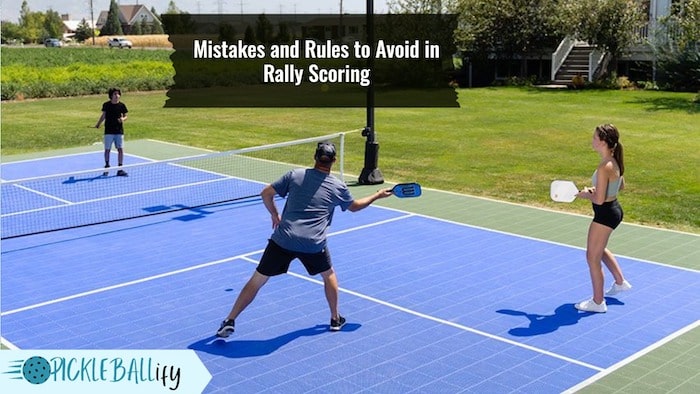
- Relying too much on strong serving: With rally scoring, strong serving is not as important as consistent play. Don’t rely solely on your strong server to win the game. Instead, focus on winning rallies with good teamwork, placement, and shot selection.
- Getting too tired: With rally scoring, there is less time to rest and recover between points. You need to be physically and mentally prepared for longer and more intense rallies. Make sure you hydrate, stretch, and pace yourself during the game.
- Losing focus: With rally scoring, every point counts, so it’s important to stay focused and not get distracted by other things on the court or in your surroundings. Don’t let a bad call, a missed shot, or a noisy crowd affect your concentration. Keep your eyes on the ball and your mind on the game.
- Committing faults: There are many types of faults that can end a rally in pickleball. Some of the faults that if you commit, you will lose a rally are1:
1) Hitting the pickleball ball into the net
2) Non-volley zone faults
3) Hitting the pickleball ball out of bounds
4) Not adhering to the pickleball two-bounce rule
Make sure you know and follow the rules of pickleball to avoid giving away easy points to your opponents.
Rally Scoring vs. Traditional Scoring: Which One is Better for Pickleball?
Rally scoring and traditional scoring are two different ways of playing and scoring pickleball. Both have their advantages and disadvantages, and both can affect how pickleball is played and enjoyed.
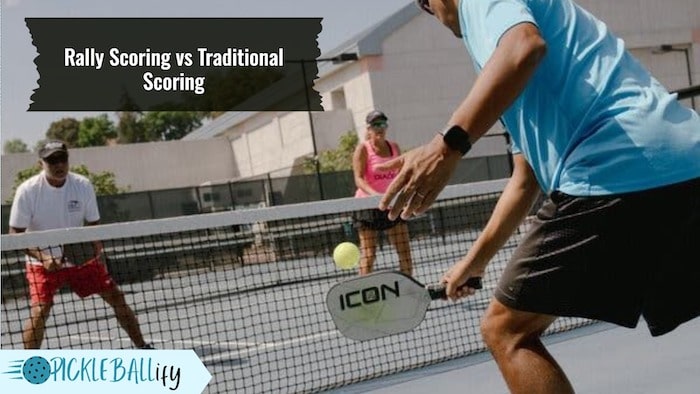
Some players prefer rally scoring because it makes games faster, more predictable, fairer, and more compatible with other sports. Some players prefer traditional scoring because it preserves the nature and strategy of pickleball, makes games more fun and social, and avoids confusion and complication.
Ultimately, there is no definitive answer to which scoring system is better for pickleball. It depends on personal preference, playing style, skill level, and goals. Some players may like to try both scoring systems and see which one suits them better. Some players may like to use different scoring systems for different occasions or formats.
The important thing is to respect each other’s opinions and preferences and to have fun playing pickleball regardless of how points are scored.
FAQs
Yes, in most pickleball games that use rally scoring, you must win by a margin of at least 2 points. This means that if the score is tied at the winning score (e.g., 11-11 or 15-15), the game continues until one team has a lead of 2 points or more to be declared the winner.
Yes, in pickleball rally scoring, both the serving and receiving teams have the opportunity to score points on every rally. The team that wins the rally, regardless of whether they were serving or receiving, earns a point.
No, in pickleball rally scoring, the serving team does not lose points for faults or errors. However, if the serving team fails to hit the ball into the proper serving area, it results in a fault, and the serve is turned over to the other team. The receiving team then has the opportunity to score a point by winning the rally.
Yes, in pickleball rally scoring, the serving order changes each time a point is scored. The team that wins the rally earns the right to serve for the next point, and the players rotate accordingly. This ensures that both teams have an equal opportunity to serve and score points.
Final Words
In conclusion, pickleball rally scoring is an exciting scoring system that adds an element of strategy and intensity to the game. It allows both the serving and receiving teams to score points on every rally, and the first team to reach the predetermined winning score with a lead of at least 2 points wins the game.
With its dynamic nature and potential for quick point swings, pickleball rally scoring keeps players on their toes and makes for thrilling matches on the pickleball court.

